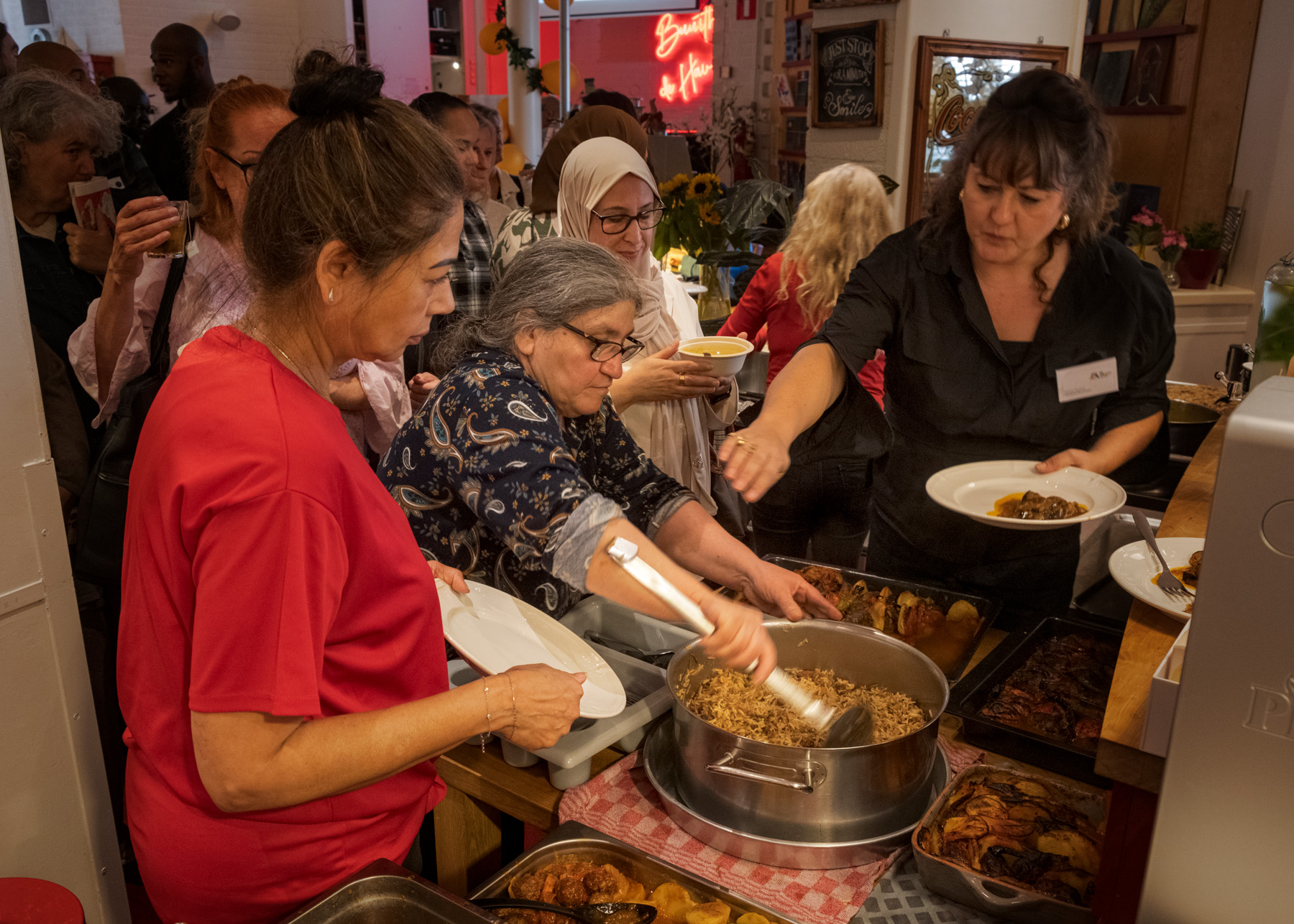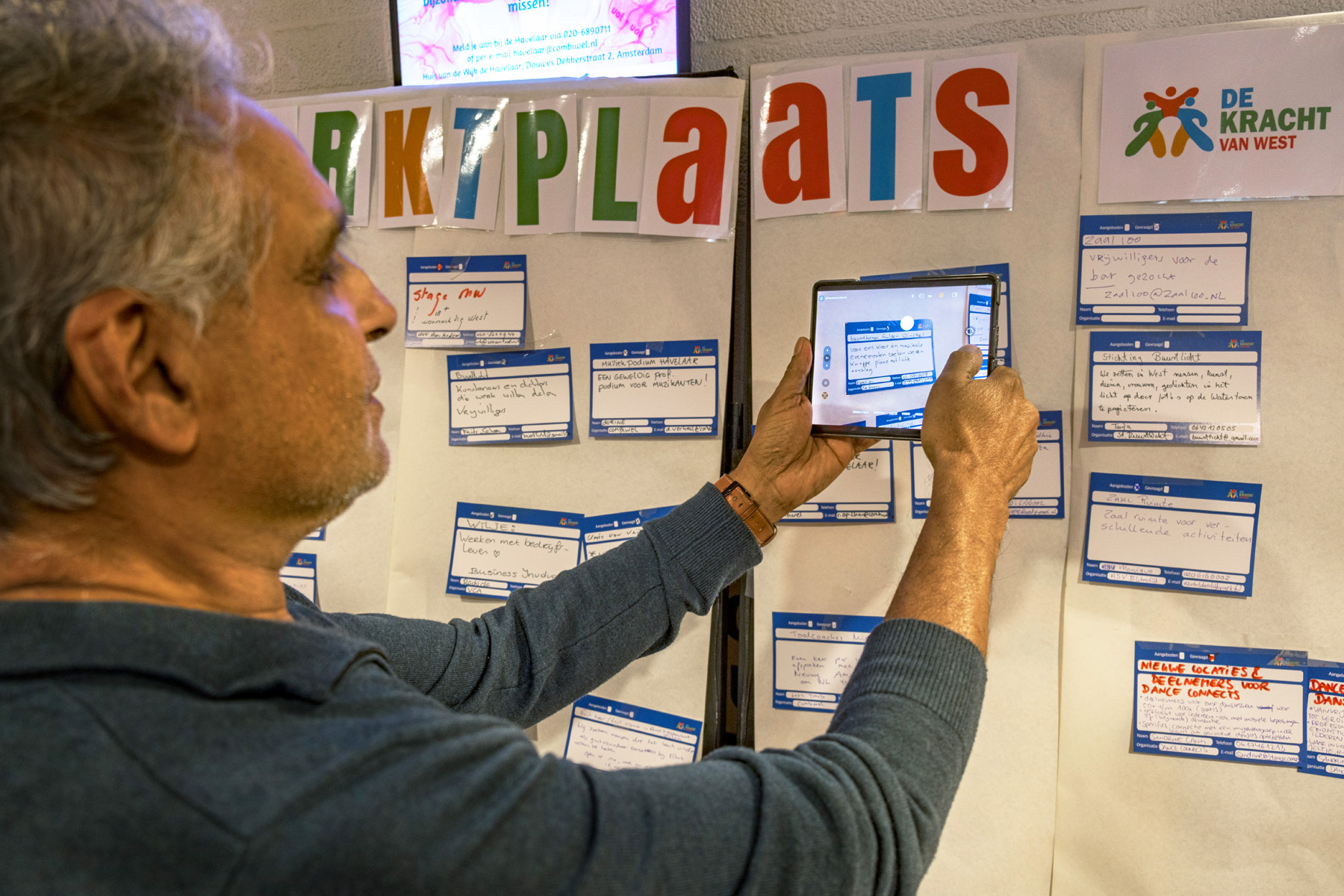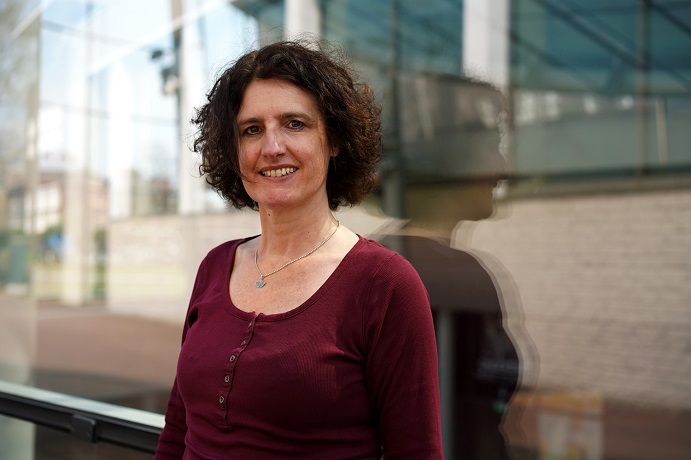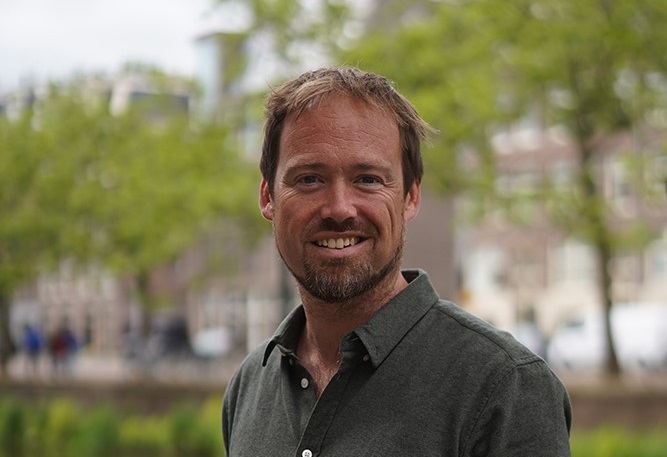Power of the West: an afternoon full of meeting and new collaboration

On Thursday, October 2, 2025, the Havelaar was filled: the first networking event Power of the West for all social basic parties in the West was on the agenda. Over eighty people from various large and small organizations came together to meet each other and discover how they can collaborate more — with the goal: to create more impact together! And that was successful.
The social basis: more coming together
Host Bahram Sadeghi welcomed everyone and was the first on the Social Marketplace: a wall where you could post your question or offer. He then invited Dorine Verheul, process facilitator at Combiwel, to the stage to ask her about the social foundation. What exactly is that? By now a well-known term for many, but still good to reiterate. The social foundation is the entirety of informal and formal assistance and facilities in the immediate living environment of people. The social foundation helps people to develop and participate in society and find support in the neighborhood.
The social foundation is the entirety of informal and formal assistance and facilities in the immediate living environment of people. The social foundation helps people to develop and participate in society and find support in the neighborhood.
In Amsterdam, since 2025, there has been a new subsidy scheme for the social foundation that distinguishes between core functions, area-oriented tasks, and social fabric. The task is to collaborate more. The core functions are: neighborhood work, youth work, street corner work, children, and volunteer work.
The core functions are carried out in West by Combiwel, Dock, The Mall de Baarsjes, perMens, Dynamo, and Vrijwilligers Centrale Amsterdam. These organizations are part of the Core Alliance Social Foundation West. They have the task of working integrally together with each other and with all other parties in the social foundation. This networking event is an initiative of the Core Alliance to stimulate this collaboration!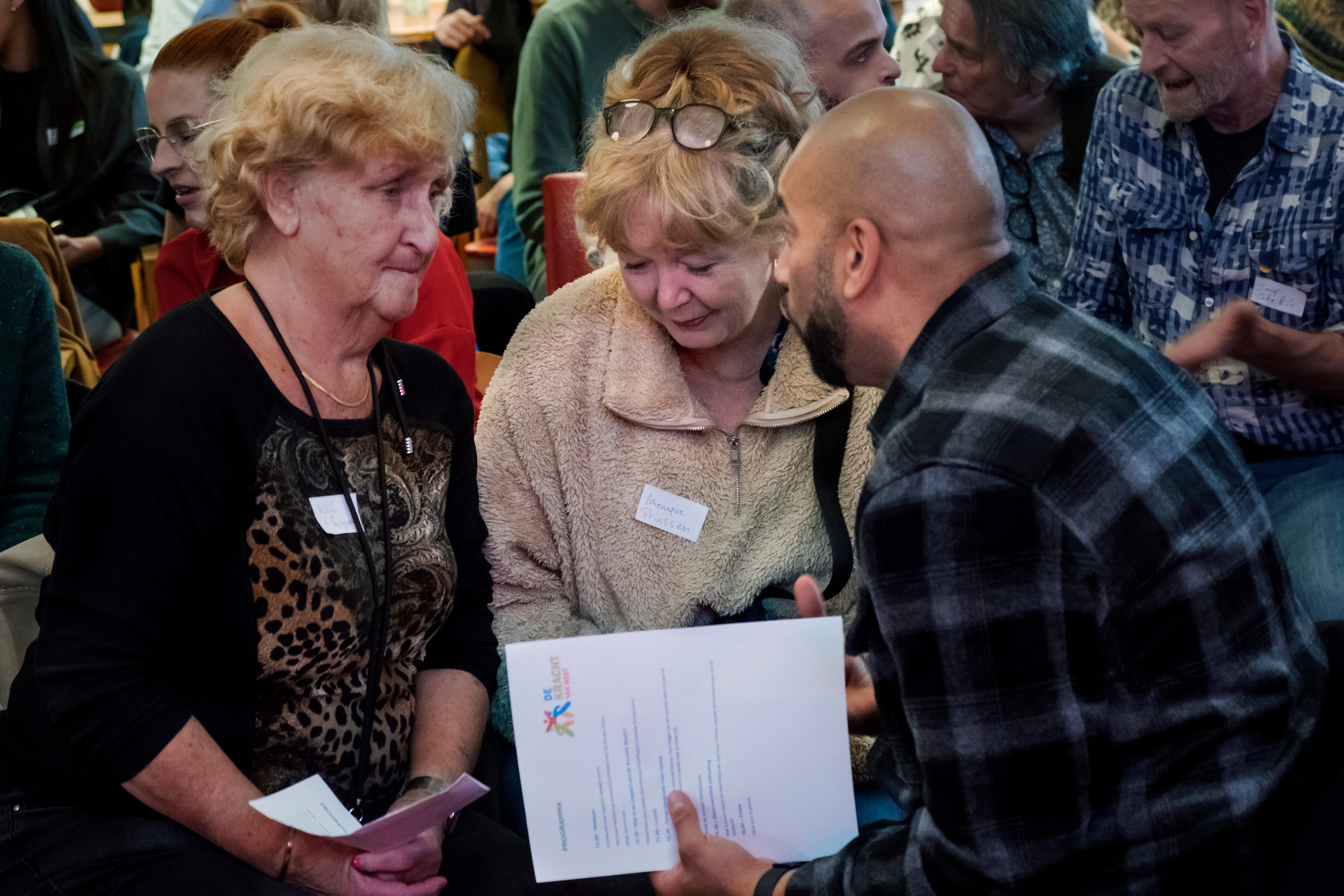
What is the impact of the social foundation?
Nettie Sterrenburg from the Volunteer Center Amsterdam explains what impact is and how we create impact. What we want is for no one to be poor in West, for no one to be lonely. That when we are old, we live happily and independently at home, that when we are young, we feel healthy and resilient, that we have friends and know our talents. That when we are children, we play together and grow up in safe neighborhoods. How can you contribute to this?
When we talk about impact, we often refer to these kinds of big goals. We often use abstract terms like: more social cohesion, more resilience among youth, safe neighborhoods. What does that actually mean?
You cannot demonstrate that you are contributing to more social cohesion in West with a coffee morning for women on Thursdays. Because to achieve that, you need a lot of activities and facilities. However, you can demonstrate that the people who come to you share tips about parenting, that they meet up together at the playground after the coffee morning.
Impact is the change that occurs in your target group through your activities. Other words for impact are: effect, change, making a difference. It’s not about how many workshops you have conducted or how often the community room has been open. It’s about what it brings to the people who come to you. What will they do or think differently? We usually talk about a positive change, but there can also be negative, unintended effects. These are also important to uncover so that you can come up with solutions.
Think of the introduction of a deposit on cans. The expected impact was: less litter from cans on the streets and more recycling of cans. These two goals have also been achieved. However, an unintended effect was that people empty trash cans in search of cans. This creates a lot of extra mess on the streets. Another unexpected effect is that people with little money can earn some extra cash by searching for and returning cans.
If you want to measure impact, you will listen to what people tell you. What effect does your activity have on them? Participants in a walking group might say, “I really enjoy meeting new people” or “The walking group is a motivator for me.” Those are direct effects.
You can measure impact in various ways. It helps you learn about your own activity: are we achieving what we want to achieve? It is also very powerful towards the municipality or funds to demonstrate what your impact is. Do you want to know more about measuring impact? ContactNettie Sterrenburg.
In conversation about impact on various themes
After the delicious lunch made by Vrouwen Expeditie West, we will split into smaller groups to discuss various themes:
- How do we as a social foundation help people in poverty?
- How do we as a social foundation reduce digital inequality?
- How do we, as a social foundation, help people in loneliness?
- How do we as a social foundation help young people with social and mental problems?
- How do we, as a social foundation, help children grow up safely?
- How do we, as a social foundation, contribute to older adults living independently at home for longer?
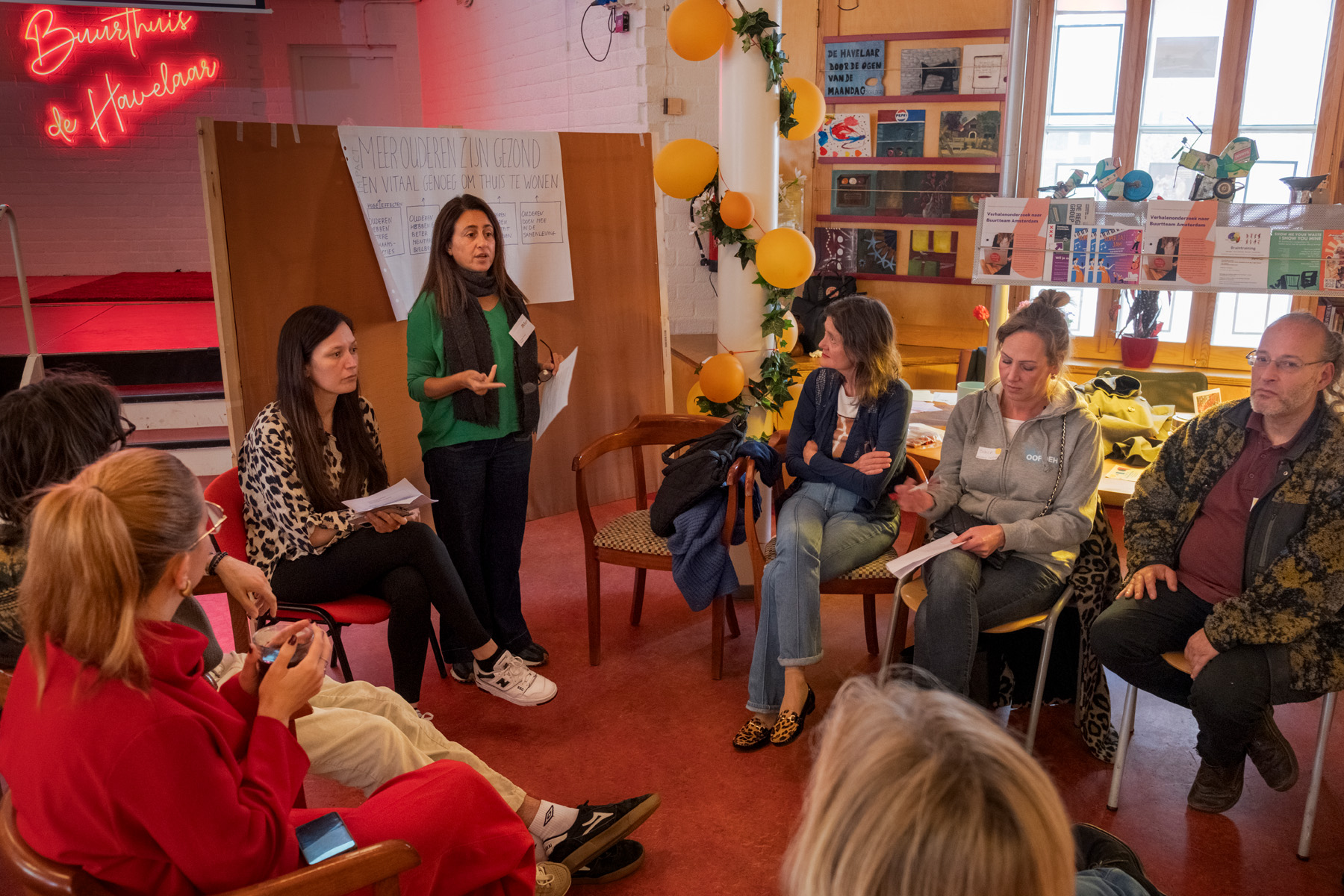 In the discussion groups, we look at which activities we are already doing that contribute to the impact on this theme. Are there any activities missing? Then we examine what we can add or change in our activities to increase the impact. Finally, we will look for ways to collaborate on new activities that will allow us to create even more impact.
In the discussion groups, we look at which activities we are already doing that contribute to the impact on this theme. Are there any activities missing? Then we examine what we can add or change in our activities to increase the impact. Finally, we will look for ways to collaborate on new activities that will allow us to create even more impact.
From the reports of the various groups, it appears that many adjustments to existing offerings have been proposed to create more impact on the various themes. A few questions have also arisen. And there are15 new ideasto collaborate have been conceived!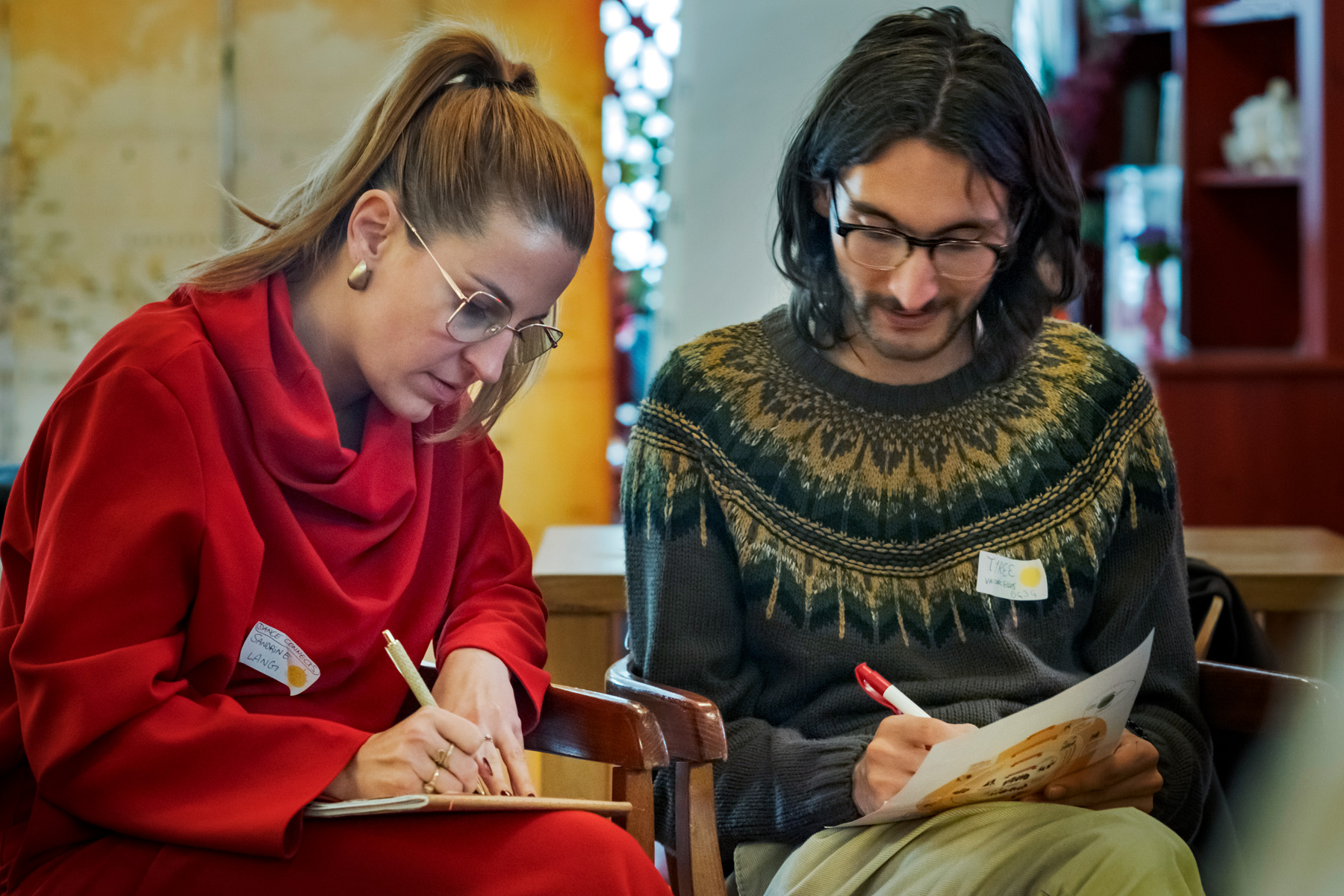
A selection of the new collaborations
- Warm Welkom, in collaboration with the Buurtwerkplaats, will offer a group activity/course for newcomers in the In My Backyard group.
- De Tagerijn wants to offer a trial lesson of Flowers of Chi.
- Warm Welkom wants to organize a joint eating project with Church and Neighborhood to get to know each other better in Filah.
- Union of Volunteers and OOPOEH: Connecting UVV volunteers and seniors over 70 with a pet-sitting dog from OOPOEH.
- Oud Learned Young Done and Dance Connects: Dancing college! First a lecture on the importance of movement for your health and then dancing.
- Meidenwerk wants to visit Elance to learn how they set up one-on-one conversations and how the process is initiated.
- Ubuntu Ambassade will join the Mall on the Galaxy boat to reach young asylum seekers.
Questions:
- Is there (sufficient) availability for women who want to take computer classes?
- Is enough being done in the area of bullying? How do you connect the school, the neighborhood, the sports club, and home?
Read the minutes for a detailed report by theme.
New ideas: thinkers wanted
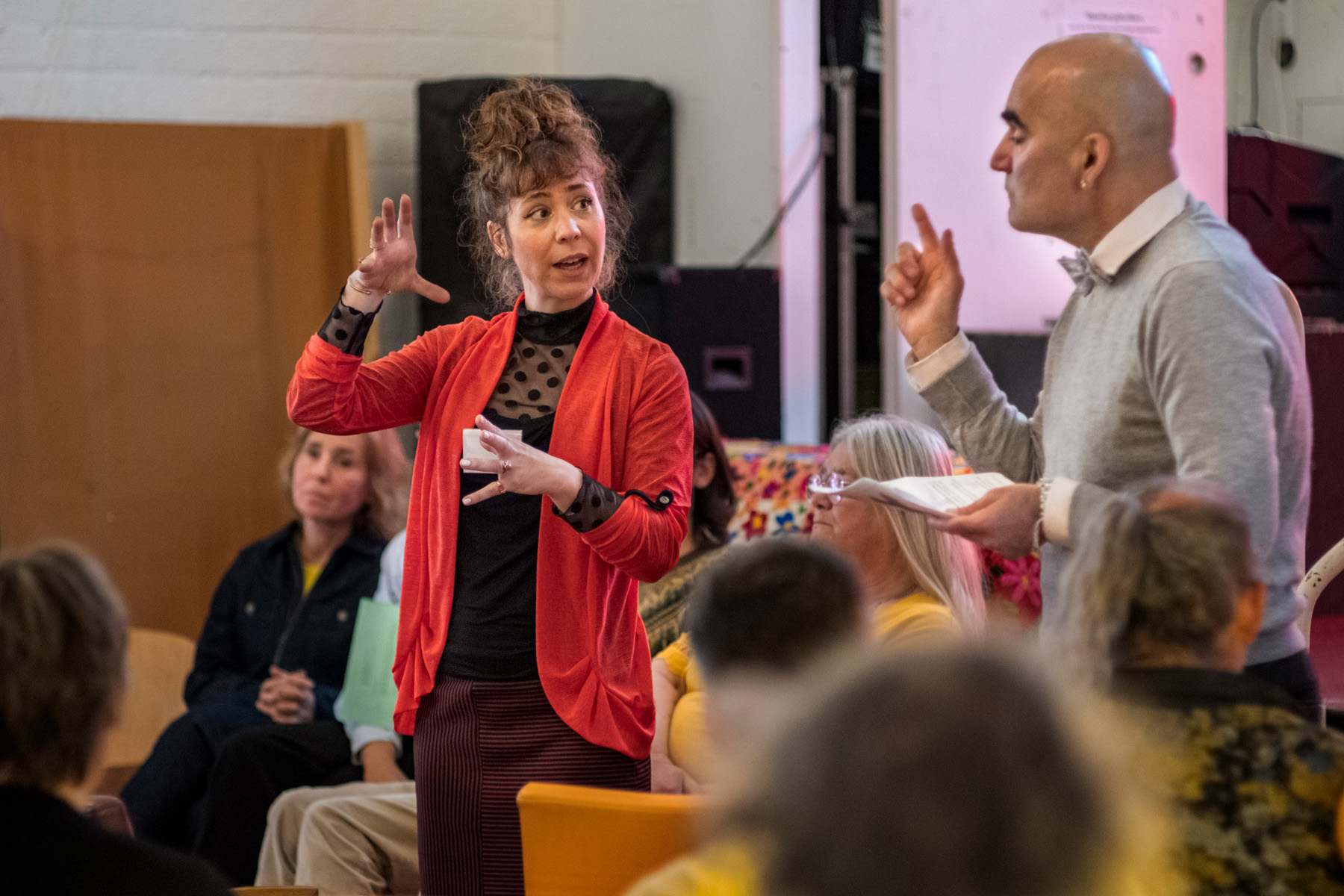 There are four ideas conceived for which it is necessary for a group of people to start working on:
There are four ideas conceived for which it is necessary for a group of people to start working on:
- From the group of children: A peaceful walk from school to the sports club, perhaps during the evening four-day event? In combination with vaccinations?
- From the poverty group: Physical flexible workspace for a social base, so you can meet each other. Where you can also have lunch together. A social base lab.
- From the poverty group: Organizing a residents’ platform where residents and professionals engage in dialogue with each other.
- From the group of seniors: create app groups by theme or target group. Is there a need for that?
And anyone who wants to think along about the next Power of the West can sign up for that too!
Sign up atSimone Timmer.
Contact persons Social Base West
We have created a new update of the contact list Social Base.Download them here.Do you also want to be on the list or is something wrong? Let it be known toSimone Timmer.
Until the next Power of the West!
Photography: Peter Lange (VCA Media)


